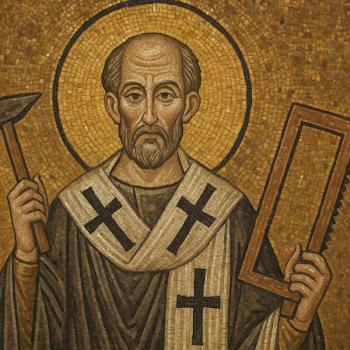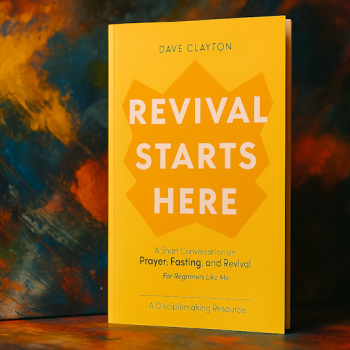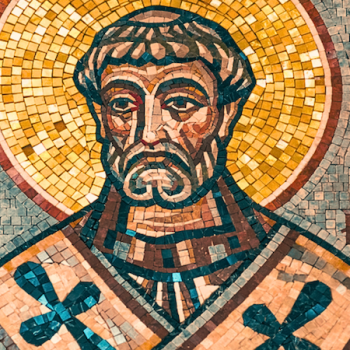
Last year, I attended a workshop for pastors on how to more effectively support those they serve who are going through the journey of mourning and grief. As the event began, the speaker engaged in some light-hearted small talk about the challenges of pastoring, using humor to make his points. One of his comedic reflections highlighted a paradox of modern-day ministry: while many people and polls about patterns of people claim that individuals desire smaller churches, fewer programs, and more meaningful communities, it seems that of those moving on from our church community, few are going to smaller church communities, rather most are regularly drawn to bigger churches with more people and programs. We need more people who are called to serve, stay, and pray in small urban, suburban, and rural church communities – where they can do church in a prophetically different way, and where they can help God’s people and church influence neighborhoods through faithful and long-lasting means. Paul’s command to lead a quiet live is for us individually, but it was originally charged to a collection of church communities. This blog post is a call to commit to church communities leading quiet lives.
We need fewer pastors interested in upward mobility.
Though we joked about this observation, the draw to upward mobility is not only found among those attending smaller churches, rather it is also a paradox that is well-noted and established among pastoral leaders of small churches. The speaker noted that it’s rare to see established or large church pastors exemplifying “downward mobility.” Instead, many aren’t feeling drawn (or called) to small church communities, but rather they almost always seem to feel called to larger church communities with more people, programs, pay, and resources. Think about this, consider how uncommon, if not unheard of, it is for a megachurch or large church pastor to resign and choose a simpler, quieter life in a small rural church community. We need more pastoral leaders who are called to help, stay, and pray in small urban, suburban, and rural church communities to discover their God-given identities and reach their God-given purposes.
We need churches that understand the call to lead a quiet life.
This lighthearted and off-the-cuff comment from this instructor struck me in that workshop and it has stuck with me since. The church needs a greater grasp of what Paul is challenging them towards in 1 Thessalonians 4:11-12. Author Glenn Daman calls the rural church, the forgotten church because few people feel a call to it or see the way it matters. Like the rural church, the local small church is an often forgotten church community that is quickly succumbing to the spiritual wastelands in which they are planted. One of the reasons this is happening is because people do not see the value of these church communities nor do they see the value of committing to a church community that accepts Paul’s challenge to lead quiet lives. In this season I am living out such a call as a pastoral leader, and I am excited to learn about what God is doing in those spaces. Tonight, I found myself reflecting on the call for downward mobility by this presenter once again. The truth is most of us were raised in a consumeristic culture that considers a Supercenter Walmart better than a regular Walmart. It is only understandable in a culture that prioritizes more as better that we would want more offerings and opportunities in a church community. Truthfully, wanting more is always part of the human tendency is always to want more. However, more than bigger churches, we need a better understanding of what it means to commit to a church community, and why we connect to those church communities.
We can learn from Legos.
These days, Legos are no longer just for kids. With over 11,000 pieces, the LEGO Art World Map is the largest LEGO set in terms of piece count, transforming into a stunning piece of wall art. The LEGO Titanic, measuring 53 inches long, is the third biggest, comprising 9,090 pieces. These intricate sets exemplify more than just complex structures; they are made up of small pieces that together tell a story. The many Legos work together to make a story, they portray something bigger. These Legos incorporated together in a Lego set, can also symbolize unity, diversity, and interdependence, much like we find in a healthy church, the body of Christ. Just as a Lego set is composed of various pieces of different shapes, sizes, and colors, the church community is made up of individuals with diverse backgrounds, talents, callings, and personalities. Each Lego piece serves a unique purpose in constructing the overall structure, mirroring how each church member contributes uniquely to its functioning. The interconnectedness of Legos forms a stable structure, representing the interconnectedness and interdependence within the church when it is interconnected in the way it should be.
The local church is more than a place to belong or be launched into mission.
The local church is often seen as a training ground for missional activity, preparing individuals to engage in missions locally, regionally, and globally. For some, it is just a place to belong or a be served. However, these perspectives limit our understanding of the dynamic potential of the local church community. Beyond being a launching pad for missional activity, the local church embodies a multifaceted mission. It serves as a vibrant community of ordinary everyday people, who are intricately woven into the fabric of society, and with each other, and as a result, the local church community carries the power to impact the world with profound measures and legacy. The mission of the church is not just about occasional volunteerism or financial support but it is also about living out honor, service, love, and help to each other – to the others in the local church community who make it a family, who click together to make it a story.
Therefore the local church is a place where we commit not just to a history, or a theology, or to programs, but it is a place in which we commit to each other, to a community journeying through life together. The church community is a story together, made up of who God brings together, and it equips people with the story of the Kingdom of God, but even more, it is a journey together that involves intentionality to discipleship and learning to embrace each other, to live out the healing of the Kingdom not only to the neighborhood around us, but also to the spiritual, physical, and emotional needs of those within the community. The local church is a place to discover God’s justice, mercy, and humility and to live it out to each other in tangible ways.
Paul’s Letter to the Corinthians
Throughout his letter to the Corinthians, Paul emphasizes unity, mutual respect, and commitment to the others within the local church. In 1 Corinthians 12, Paul assures them of their abundance of spiritual gifts and urges them to strive for unity and harmony, avoiding the trap and derailment that comes through divisions in the church community. Also, Paul highlights the essential role of every individual church member, regardless of what they perceive to be their strength or ability, and Paul challenges any notion of hierarchy within the church. He stresses the significance of the contribution of every individual, and in doing so calls for mutual honor, appreciation, and equality in being part of the story of that church community together. Even more than being united by small groups and programs, we have been called to be unified as individuals in community together on this journey of doing the works, words, and ways of Jesus.
Interconnected and indispensable.
In 1 Corinthians 12:12-27, Paul uses the analogy of the body to illustrate the church’s unity and diversity. Just as a body has many parts, each with its unique function, the church comprises various members, each essential for the community’s overall health and function. This was a common analogy for society in his day. Paul utilizes it to reverse the way it was often used in their day. In the world around them, the body imagery was used to elevate some parts and diminish others. It was used to keep people imprisoned in their classes and categories. However, in his use, Paul highlights that even the seemingly weaker parts are indispensable, needing double honor and value and that all parts should have equal concern for each other. In the story of the local church, each individual is indispensable and when we are interconnected in the story God desires, we find our dependency on each other, when one part suffers, every part suffers; when one part is honored, every part rejoices. This can bring fulfillment to a person’s life unlike any program or worship band can.
A commitment to each other.
Being part of a church community means committing to each other. This commitment involves seeing each other as necessary parts of the whole, working together despite differences, and honoring and loving each other as equals. It is an active and functioning membership, where each member’s unique contributions are valued, and everyone plays an integral role in the collective mission and well-being of the body. Thom Rainer, in his book I Am A Church Member, emphasizes that church membership is about being an active and functioning member of the body of Christ. This involves giving, serving, ministering, evangelizing, studying, and being a blessing to each other. For Paul, for Thom Rainer, a significant being part of a church community is then being a community of everyday people who are committed to worshiping God together, following Jesus together, and journeying through life together, but also being committed to journeying through life together in a way that honors, the image, and gifting of God in each other.
A call to each other with love, unity, and honor.
As members of a church community, we are bound in mission to love one another, work towards unity, and honor the Jesus in each other. Jesus’ command to love one another (John 13:34-35), Jesus’ prayer for unity (John 17:20-23), and Jesus’ presence among us (Matthew 18:20) remind us of our commitment to embody these principles to our neighbors and those in our church community. Only when we are committed to doing so can we fully realize the local church’s potential as a vibrant community of ordinary everyday people, who are committed to carrying out God’s mission of love and reconciliation in ways that really matter. This can be done in any size church community
A few final thoughts.
Like Legos in a Lego set, it is perhaps in the forgotten church that we become what the church is supposed to be, a diverse story. As members of the body of Christ, we have been called to unify together and rely on one another for support, encouragement, and mutual care. Despite our differences, in the local church, we come together to create a unified structure, enriching the lives of each other and prophetically witnessing about the Kingdom of God in the places we each live, work, and play. This is what unifies us. In the forgotten small church, every member is essential for fulfilling God’s purposes, just as different Lego pieces are needed to complete a set. Through collaboration and teamwork, believers in the body of Christ advance God’s kingdom and fulfill His purposes on earth. The local small church has untapped potential. What it needs are people and pastors willing to lead quiet lives to commit to the local church, to each other, and to carry the mission together in faithful small ways. Many individuals like to envision God calling them to missions and new cities to do missionary and church planting efforts. What would it look like for you if God called you to commit to church communities leading quiet lives for a season?













